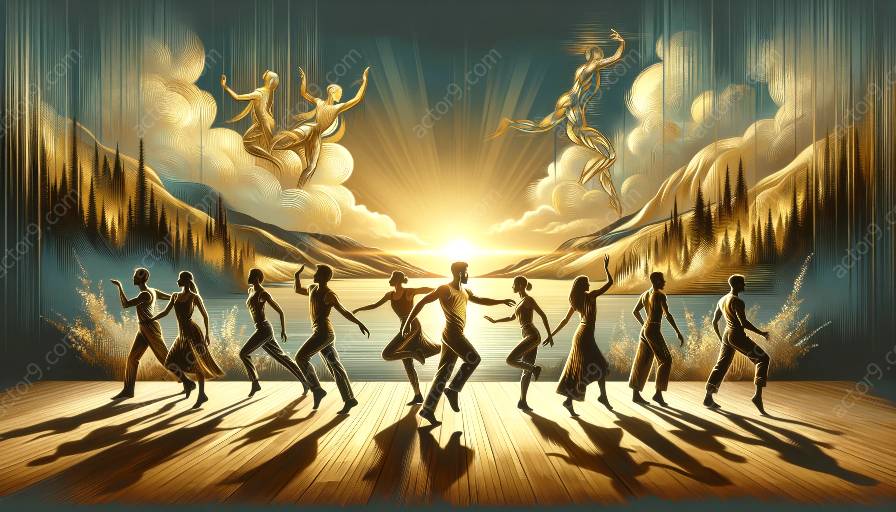Music and sound play a crucial role in complementing physical storytelling and acting techniques in theater. When combined effectively, they can enhance the theatrical experience and evoke powerful emotional responses from the audience.
The Impact of Sound and Music in Physical Storytelling
Physical storytelling in theater relies on non-verbal communication through body movements, gestures, and expressions. It allows actors to convey narratives and emotions using their physicality, creating a captivating visual experience for the audience.
Sound and music act as powerful tools to support and enrich the physical storytelling process. They can help establish moods, emphasize key moments, and create a sense of atmosphere within the theatrical space.
Enhancing Atmosphere and Immersion
One of the primary roles of music and sound in physical storytelling is to enhance the atmosphere and immerse the audience in the world of the performance. By using carefully selected soundscapes and musical scores, theater productions can transport spectators to different time periods, locations, or emotional states, further enriching the physical storytelling experience.
Emotional Resonance and Dynamics
Music and sound also contribute to the emotional resonance and dynamics of physical storytelling. They can underscore the intensity of dramatic moments, create tension, or evoke deep emotional responses from the audience. In physical storytelling, the synchronization of movement with music and sound adds depth and emotional impact to the performance, allowing the audience to connect with the narrative on a visceral level.
Complementing Acting Techniques
Acting techniques in theater encompass a wide range of skills and methods used by performers to bring characters to life and convey authentic emotions. The synergy between music, sound, and acting techniques is evident in their collaborative efforts to convey complex narratives and evoke powerful responses from the audience.
Rhythmic Pacing and Timing
Sound and music can greatly influence the rhythmic pacing and timing of physical storytelling and acting. Through carefully choreographed movements synchronized with rhythmic soundscapes, actors can create a sense of fluidity and cohesion, amplifying the impact of their physical performances. This integration of rhythmic elements contributes to the overall energy and engagement of the theatrical production.
Expressive Enhancements and Character Development
When used thoughtfully, music and sound can enhance expressive qualities in acting, aiding in character development and the portrayal of genuine emotions. The interplay between sound, movement, and expression allows actors to delve into the depth of their characters, conveying intricate emotions and inner conflicts with greater depth and authenticity.
Creating a Multi-Sensory Experience
By incorporating music and sound into physical storytelling and acting techniques, theater productions have the potential to create a multi-sensory experience for the audience. The fusion of visual, auditory, and kinesthetic elements elevates the overall impact of the performance, leaving a lasting impression on the audience.
Conclusion
Music and sound hold immense power in elevating physical storytelling and acting techniques in theater. When seamlessly integrated, they can enrich the atmosphere, evoke profound emotions, and elevate the overall theatrical experience. The effective collaboration between music, sound, physical storytelling, and acting techniques results in compelling, immersive performances that resonate with audiences on a profound level.













































